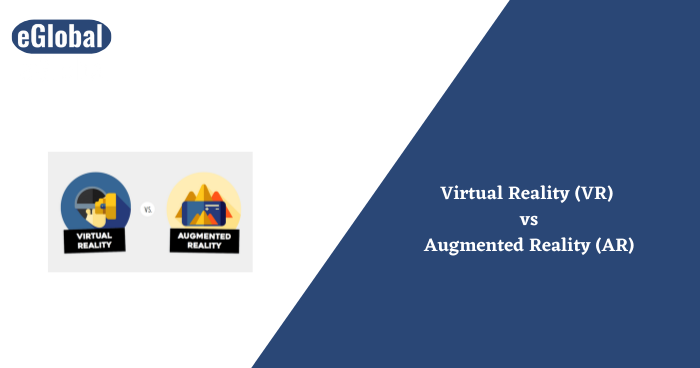

Virtual Reality (VR) and Augmented Reality (AR) are two technologies that have gained significant popularity in recent years. While both offer immersive experiences, there are fundamental differences between them. This article will explore those differences, the pros and cons of each technology, and how they are being used in various industries.
Virtual Reality (VR) is a technology that uses computer-generated graphics to create a completely simulated environment. Users are completely immersed in this environment through the use of a VR headset, which covers their entire field of view. The graphics are rendered in real-time and can be interacted with using various controllers, such as hand-held controllers or even full-body suits.
One of the biggest advantages of VR is that it can create completely immersive experiences. Users can feel as if they are truly in another world, which can be particularly effective for training or education. For example, medical students can practice surgeries in a simulated environment without the risk of harming a patient.
VR can also be used for entertainment purposes, such as gaming. The ability to completely immerse oneself in a game can be particularly appealing to gamers who are looking for a more immersive experience. Additionally, VR can be used for therapeutic purposes, such as to help treat phobias or anxiety disorders.
One of the biggest drawbacks of VR is that it can be quite expensive. High-quality VR headsets can cost several hundred dollars, which can be prohibitively expensive for some users. Additionally, VR requires a powerful computer to render the graphics in real-time, which can also be expensive.
Another issue with VR is that it can be disorienting for some users. Motion sickness is a common side effect of VR, particularly if the graphics are not rendered smoothly. Additionally, some users may feel claustrophobic or uncomfortable wearing a headset for an extended period of time.
Augmented Reality (AR) is a technology that overlays digital information onto the real world. This can be done using a smartphone, tablet, or AR headset. AR can be used for a wide range of applications, from gaming to retail to education.
One of the biggest advantages of AR is that it can enhance the real world with additional information. For example, AR can be used to overlay information about a particular location onto a smartphone camera feed, making it easier for users to navigate unfamiliar areas. AR can also be used for educational purposes, such as to overlay additional information onto a textbook page.
One of the biggest drawbacks of AR is that it can be quite limited in terms of immersion. Unlike VR, which completely immerses users in a simulated environment, AR simply overlays digital information onto the real world. Additionally, AR requires a camera or headset to function, which can be cumbersome for some users.
Another issue with AR is that it can be difficult to implement effectively. For example, if the AR information is not properly aligned with the real world, it can be disorienting for users. Additionally, AR requires a significant amount of processing power, which can be difficult for some devices to handle.
While both AR and VR offer immersive experiences, there are fundamental differences between the two technologies. VR completely immerses users in a simulated environment, while AR overlays digital information onto the real world.
One of the biggest advantages of VR is that it can create completely immersive experiences. However, VR can be quite expensive and disorienting for some users on the other hand, AR is more accessible and can be used on a wider range of devices, such as smartphones and tablets. AR can also enhance the real world with additional information, making it useful for a wide range of applications.
Another key difference between AR and VR is the level of interaction. In VR, users can interact with the simulated environment using various controllers, while in AR, users interact with the real world and the digital information overlaid onto it. This can be particularly useful for applications such as education or training, where users may need to interact with physical objects in the real world.
Both AR and VR have numerous applications in various industries. In healthcare, VR can be used for medical training, while AR can be used for medical imaging and visualization. In architecture and construction, VR can be used to create 3D models of buildings, while AR can be used for on-site visualization and collaboration.
In retail, AR can be used for product visualization and marketing, while VR can be used for virtual showrooms and online shopping experiences. In education, both AR and VR can be used for immersive learning experiences, such as virtual field trips or historical reenactments.
In conclusion, both AR and VR offer immersive experiences, but there are fundamental differences between the two technologies. VR completely immerses users in a simulated environment, while AR overlays digital information onto the real world. Both technologies have their pros and cons and are being used in various industries for a wide range of applications.
While VR can create completely immersive experiences, it can be quite expensive and disorienting for some users. AR, on the other hand, is more accessible and can enhance the real world with additional information. Both technologies have numerous applications in industries such as healthcare, architecture, retail, and education, and will likely continue to evolve and improve in the coming years.
Hope you find this Article informative & useful! Hire best app developers in India from eglobalindia for best app solutions at affordable cost.

© 2017 All rights reserved.